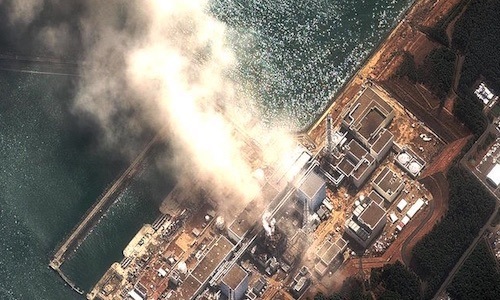
5 Years Later Fukushima Still Spilling Toxic Nuclear Waste Into Sea, Top Execs Face Criminal Charges

“I’m full of emotion,” Ruiko Muto, head of a campaign group pushing for a trial, told a Tokyo press briefing. “This will be a great encouragement for hundreds of thousands of nuclear accident victims who are still suffering and facing hardship.”
Environmental group Greenpeace also called the charges against the Tepco executives a step forward for Fukushima victims.
“The court proceedings that will now follow should reveal the true extent of Tepco’s and the Japanese regulatory system’s enormous failure to protect the people of Japan,” Hisayo Takada, deputy program director at Greenpeace’s Japan office, said in a statement. “Tepco and the Japanese regulator continue to ignore demands to disclose key details of what they know about the causes of the accident. The hundred thousand people who still can’t return home deserve to have all the facts.”
In response to the indictment, a Tepco spokesman said, “We will continue to do our utmost to sincerely address the issue of compensation, decontamination and decommissioning of the plant, and at the same time we express our unflagging resolve to ensure strengthening the safety measures at our nuclear power plant.”
The nuclear meltdown forced the evacuation of 160,000 locals who lived around the power plant with many who will never return. The devastating fallout continues to this day, as Scientific American wrote in their upcoming issue:
The plant has yet to stop producing dangerous nuclear waste: its operator, the Tokyo Electric Power Company (Tepco), currently circulates water through the three melted units to keep them cool—generating a relentless supply of radioactive water. To make matters worse, groundwater flowing from a hill behind the crippled plant now mingles with radioactive materials before heading into the sea.
Tepco collects the contaminated water and stores it all in massive tanks at the rate of up to 400 metric tons a day. Lately the water has been processed to reduce the concentration of radionuclides, but it still retains high concentrations of tritium, a radioactive isotope of hydrogen. Disputes over its final resting place remain unresolved. The same goes for the millions of bags of contaminated topsoil and other solid waste from the disaster, as well as the uranium fuel itself. Health reports, too, are worrisome. Scientists have seen an increase in thyroid cancers among the children who had lived in Fukushima at the time, although it is too early to tell if those cases can be attributed to the accident.
Indeed, as Beyond Nuclear reported in October, a study examining children who were 18 years and younger at the onset of the Fukushima nuclear meltdown found an increase in thyroid cancers, as predicted by World Health Organization initial dose assessments.
Despite the environmental and human health catastrophe—as well as widespread public opposition—Japan restarted its first nuclear reactor in August.
Protests as Japan restarts nuclear reactor for the first time since 2011 Fukushima disaster. http://t.co/u0sQf3DGwT pic.twitter.com/fnGfEZb272
— Al Jazeera English (@AJEnglish) August 11, 2015
“Five years since the Fukushima accident began, Japan’s nuclear regulator is repeating the same kind of mistakes that led to the Fukushima nuclear disaster. Last week, the plutonium-fueled Takahama 4 reactor was restarted, just days after a radioactive leak in the primary coolant system,” Kendra Ulrich, senior global energy campaigner at Greenpeace Japan, said in a statement Monday.
“Japan’s nuclear regulator continues to look the other way on major safety issues. The government continues to press ahead with nuclear restarts despite unresolved safety problems that put the public at risk. It’s time to break free from nuclear and embrace the only safe and clean technology that can meet Japan’s needs—renewable energy.”
5 years ago the #Fukushima nuclear disaster happened. @gp_warrior was there. Now it’s back https://t.co/LWVpdZxAU8 pic.twitter.com/8Qi4EqzMrO
— Greenpeace (@Greenpeace) February 28, 2016
Last week, Greenpeace’s Rainbow Warrior vessel surveyed waters near the Fukushima plant to take samples from the seabed to be analyzed in independent laboratories in Japan and France.
“It’s very important (to see) where is more contaminated and where is less or even almost not contaminated,” Greenpeace’s Jan Vande Putte told AFP, stressing the importance of such findings for the fishing industry.
YOU MIGHT ALSO LIKE
China’s Coal Use and Carbon Emissions Fall as Renewables Have Record-Breaking Year
Porter Ranch ‘Monster’ Gas Leak Largest in U.S. History
Radioactive Leak at Indian Point Nuclear Plant Shows ‘We Are Flirting With Catastrophe’

 233k
233k  41k
41k  Subscribe
Subscribe 